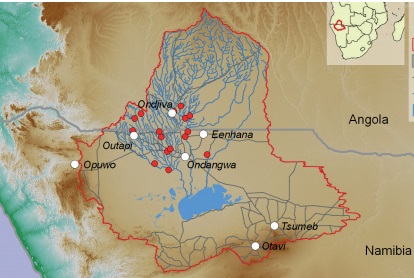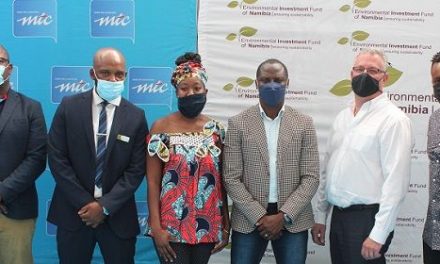
Research tool for drought mitigation in Cuvelai Basin, both in Namibia and Angola

A study released this week by German scientists proposes several interventions to mitigate the impact of drought in Owamboland, but according to the their findings there is one proviso, – the entire Cuvelai Basin and its population must be approached and managed as one coherent territory.
That will require some form of bilateral cooperation between the Namibian and Angolan governments with the specific mandate to integrate the basin in terms of infrastructure and water supply.
The findings and suggestions are covered in a policy brief of the Institute for Social-Ecological Research (ISOE) based in Frankfurt am Main, Germany. The field research was conducted by ISOE scientists of the Southern African Science Service Centre for Climate Change and Adaptive Land Management (SASSCAL).
Study authors, Stefan Liehr and Robert Luetemeier, pointed out that conventional drought risk assessment does not provide adequate tools for mitigation as these are often based only on environmental parametres, not taking into account the social impact of drought. Based on their observations in Namibia and Angola, they have developed an instrument that combines the environmental and existential aspects of drought.
The authors argue that an adaptive approach that considers the basin as a whole, will contribute to the Sustainable Development Goals of eliminating poverty and hunger, while ensuring access to clean water and sanitation.
“The transboundary Cuvelai Basin in Namibia and Angola requires an integrated, transnational Drought Information System (DIS) that incorporates both natural hazard data (e.g. precipitation, vegetation) and the social vulnerability domain (sensitivity and coping capacities). Only this integrated perspective enables governmental bodies to design suitable relief and adaptation measures,” according to the policy brief.
Proposing a targeted implementation and further development of Multi-Resources-Mix technologies like rainwater harvesting and recycling, the authors say this can reduce drought vulnerability but they point out that both water reticulation infrastructure in Angola lags the level of development in Namibia.
They argue for flexible, decentralised water capture and re-use technologies that must be integrated into larger, basin-wide infrastructure development.
On the need for incorporating a societal approach in all future water development, the authors say “Local community solidarity is an important institutional backbone for the population to cope with drought and to adapt to future changes. In particular, rural development efforts are required that go beyond technological interventions and support community building and collective actions in both water management and agricultural production, to decouple livelihoods from local rainfall.”
Furthermore, the study proposes constant monitoring of key drought parametres, covering environmental variables as well as the societal dimension, to design an adequate early-warning system to trigger specific timeous interventions that will change the modalities of drought.
“A bundle of promising key interventions to reduce the population’s sensitivity and to enhance its coping capacities in the case of drought events needs to be considered. These interventions lie in the fields of water, food, infrastructure, community and education.”
Caption: The Cuvelai Basin is a series of flat plains in northern Namibia extending into southern Angola. It is traversed by five major drainage lines all running from north to south, with the western three converging at Lake Oponono in the Oshana region and the eastern two reaching Etosha. The Cuvelai Basin floods annually through a vast interconnected network of flat pans called eeshona. This water migration is known as the Efundja.















































